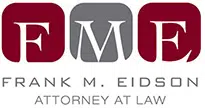Statistics show that motor vehicle accidents are the leading cause of death for teenagers today. One of the most common contributing factors of death and serious injuries in those crashes is seat belt use.
Despite aggressive efforts to improve awareness about the life-saving benefits of seat belts, only 55 percent of high school students said in a survey that they always wear a seat belt when riding with others, the Centers for Disease Control and Prevention reports.
The National Highway Traffic Safety Administration (NHTSA) is trying to change that attitude towards seat belt use by instilling awareness before drivers reach their teen years. The agency just launched its first safety belt awareness campaign aimed at “tweens” – or those between the ages of 8 and 14.
Tweens Should Learn ‘Non-Negotiable’ Seat Belt Requirement
Federal data shows that, over the past five years, slightly more than 1,500 children between the ages of 8 and 14 were killed in motor vehicle crashes. Nearly half of them were unrestrained, according to the NHTSA.
For several reasons, the tween years are particularly important when it comes to crafting safe driving behaviors.
Tweens on the younger end of the spectrum will likely be graduating from a booster seat to an adult seat belt. That is an exciting milestone. It is also one that gives them more freedom to move around in the car. They must learn from the start that seat belt use is non-negotiable.
Older tweens face the onset of adolescence and puberty – two developmental periods that usually result in some rule-breaking and rebellion on the child’s part. Still, the message must be that seat belt use is a requirement – not an option.
How Can You Get Your Tweens to Buckle Up?
If parents are going to teach their children safe driving behaviors, they must set a good example. They should always put their seat belt on when they get in the car – without exception. If there is a medical reason why a parent cannot wear a seat belt, the parent should make sure the children understand those special circumstances.
According to the NHTSA, a parent can help shape a child’s behavior as a driver and passenger by explaining the rules in an age-appropriate way.
With elementary-age tweens (ages 8-12), the parent can create incentives for children to buckle up. For example:
- Only allow them access to a preferred electronic device or other favorite activity if they wear their seat belt.
- Tell them there will be a consequence if they don’t comply, such as staying home instead of going somewhere fun.
- Let them know most accidents occur close to home and at speeds of less than 40 miles per hour.
The older group is more motivated by the law. The NHTSA suggests:
- Telling them that not wearing the seat belt is against the law, and if you get ticketed by the police, they will have to pay for it.
- Informing them that most deadly crashes occur within 25 miles from home and at relatively slow speeds.
Staying focused on the road is a priority. However, when it is safe to do so, parents should make sure to check the back seat of the car to make sure their children are still wearing their seat belts. If they are not buckled up properly, pull over and refuse to drive until they have restrained themselves properly.
Don’t Throw Away the Booster Seat Just Yet
In January, Florida changed its car seat law requiring that children must ride in a car seat or booster seat until their sixth birthday. The law previously allowed children ages 4 and 5 to ride using a regular seat belt.
However, be aware that most child safety seat manufacturers recommend that children remain in booster seats until they outgrow their specifications. AAA recommends keeping them in a booster seat until they reach 4 feet 9 inches tall, and the American Academy of Pediatrics recommends the use of a five-point harness car seat until a child is at least 40 pounds.
It is also important for parents to keep the booster seat until they are certain that their child has outgrown it completely. Some children will be big enough for an adult seat belt in some cars but not others.









